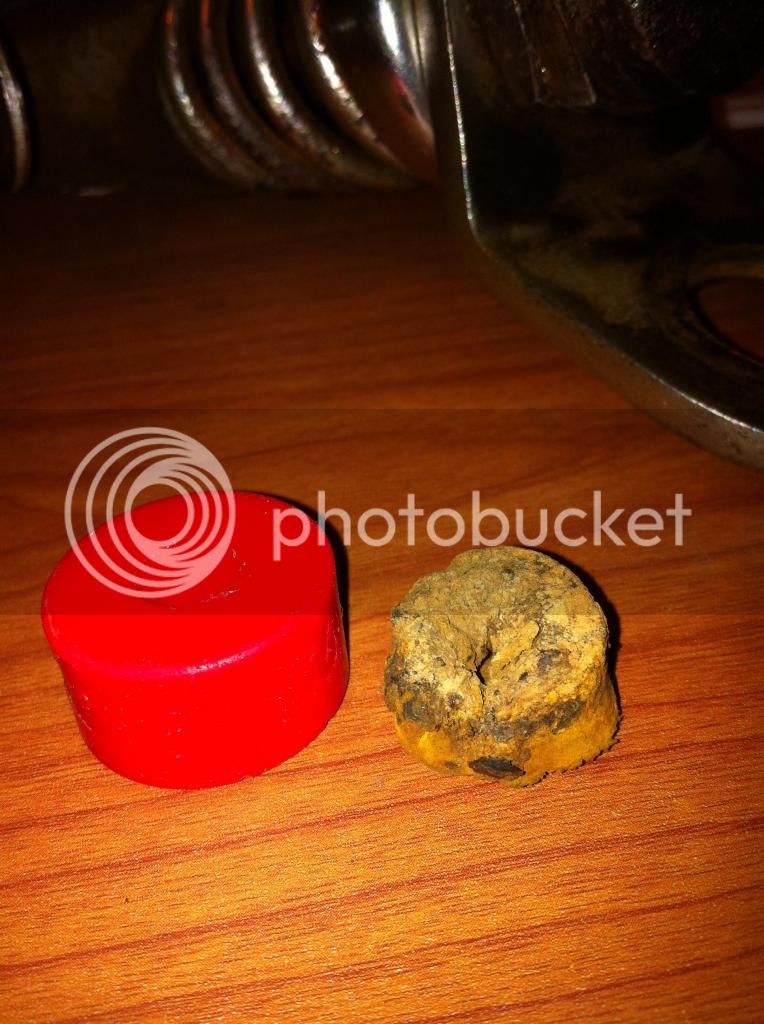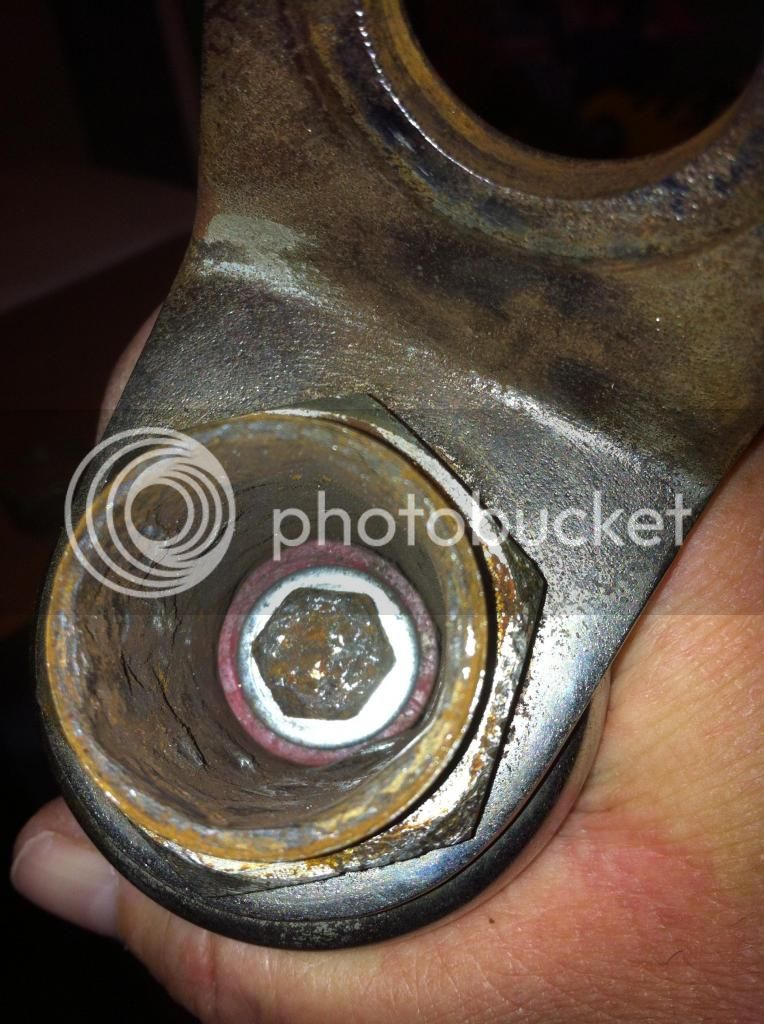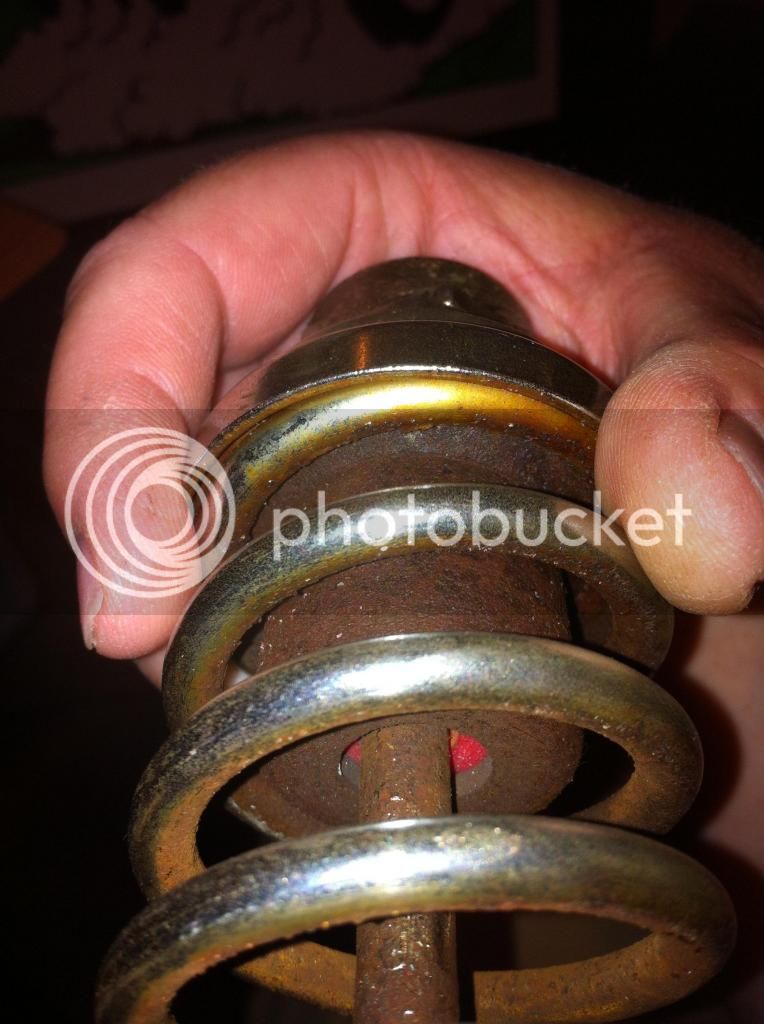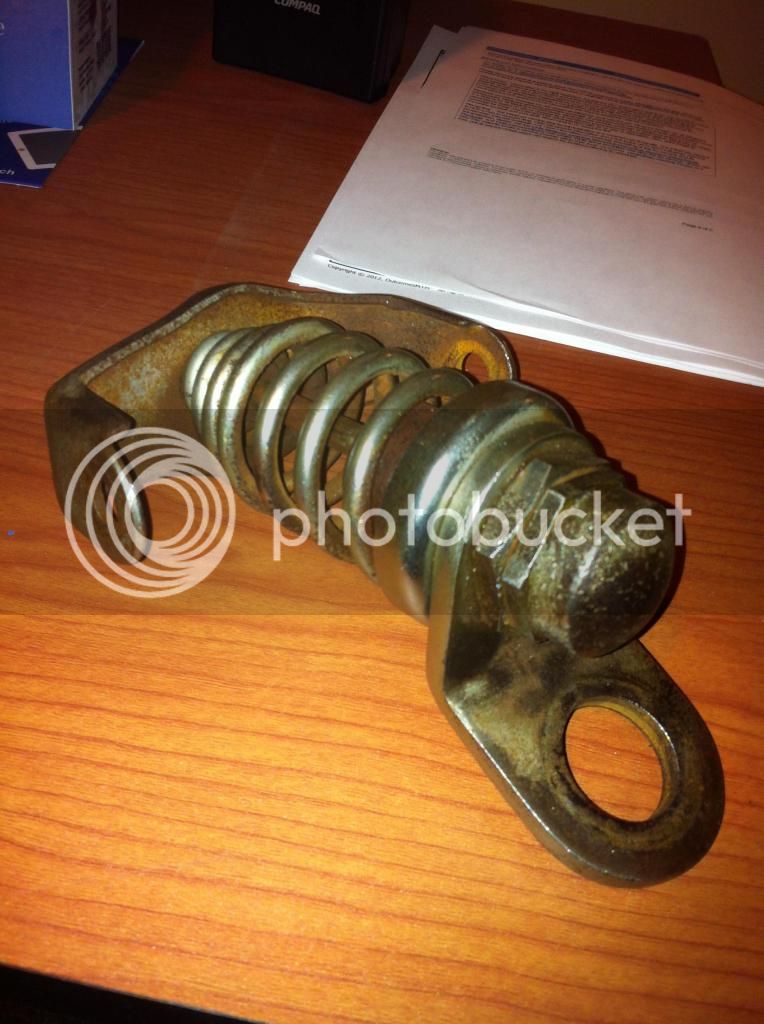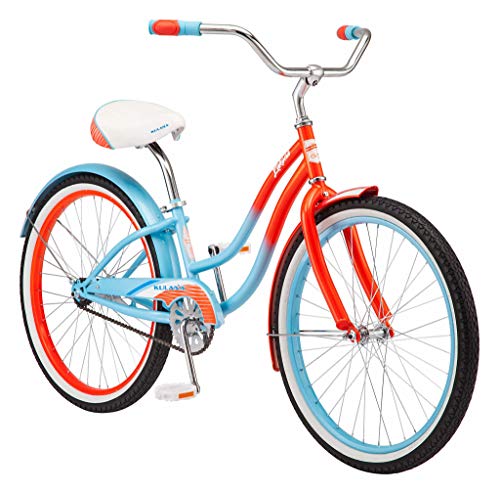I hope this is the right place for this. I have a 24" Monark SD rat that I'm finishing up. I had actually performed what I hoped was the final assembly a few days ago, but for some reason the springer on the front didn't seem to be behaving correctly. When I did a full mock-up prior to paint, it seemed fine. It rode fine, no issues at all that I could tell. Then after paint and final assembly not only did the spring feel loose/sloppy, but the bolt on my front light bracket, that I have mounted to the front fender mount (bottom of fork), rubbed the front tire when I rode. It didn't do that at all during my initial mock-ups!
So here's my question...or questions. I took the springer apart, and when I finally got the large retainer cup off the top, a small "chunk" of rubber, pathetic as it was, fell out (see pics, the rubber fell from the chamber sealed by the large retaining cup that resides just under the neck of the bike). Did there used to be, or should there be, a rubber "bumper" of sorts in the chamber to cushion the springer action? How large was it? Are there any replacements available out there? (I bet I know the answer to that last one...lol). I did find some skateboard bushings that look like they will fit perfectly with little or no modification, so I can go that route if need be. I can use one or several stacked up if I need to fill the entire chamber if need be.
My only other question would be, if there wasn't a rubber bushing in that chamber, is there a way to adjust the tension on the spring to tighten the ride up a bit?
Pics below as visual aids! Thanks a million to anyone who can help me out!!
Jay H.
OK
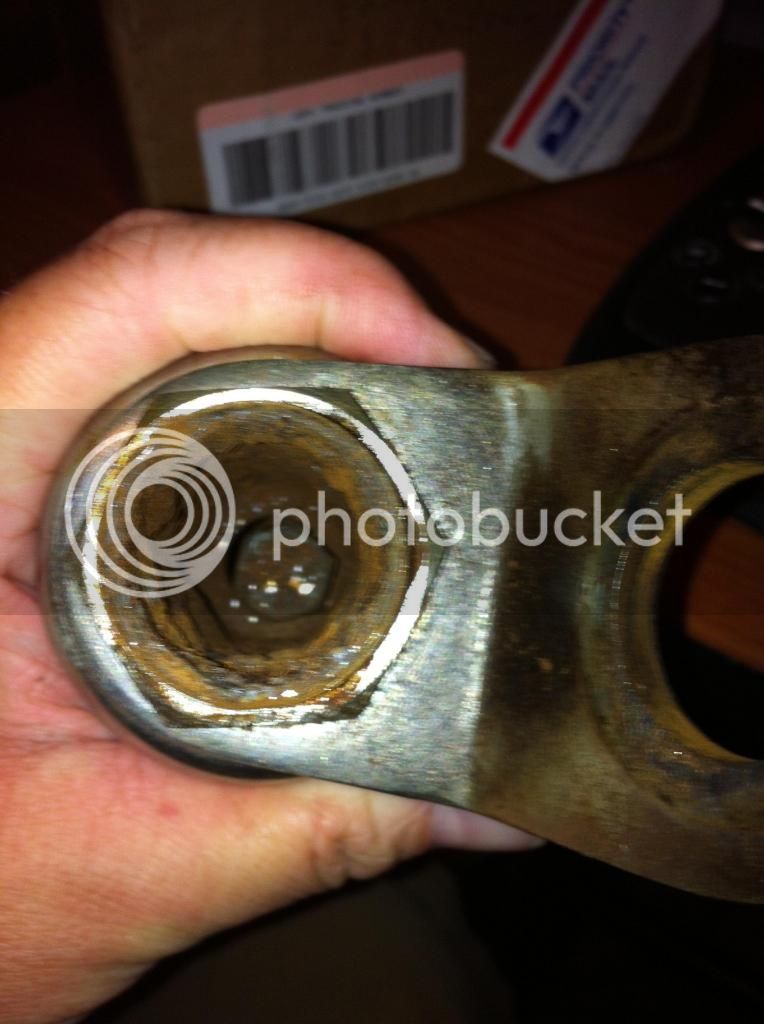

So here's my question...or questions. I took the springer apart, and when I finally got the large retainer cup off the top, a small "chunk" of rubber, pathetic as it was, fell out (see pics, the rubber fell from the chamber sealed by the large retaining cup that resides just under the neck of the bike). Did there used to be, or should there be, a rubber "bumper" of sorts in the chamber to cushion the springer action? How large was it? Are there any replacements available out there? (I bet I know the answer to that last one...lol). I did find some skateboard bushings that look like they will fit perfectly with little or no modification, so I can go that route if need be. I can use one or several stacked up if I need to fill the entire chamber if need be.
My only other question would be, if there wasn't a rubber bushing in that chamber, is there a way to adjust the tension on the spring to tighten the ride up a bit?
Pics below as visual aids! Thanks a million to anyone who can help me out!!
Jay H.
OK







